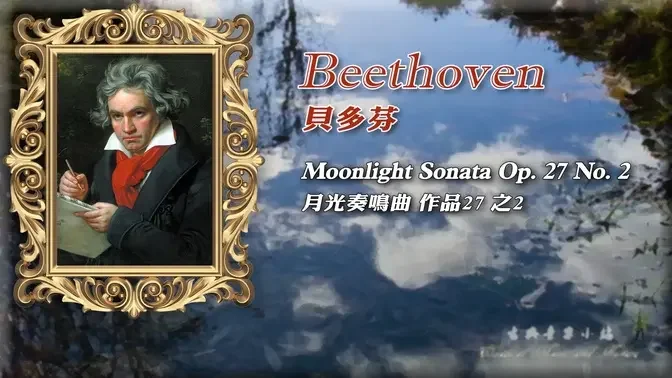【Classical music and nature 古典音樂小站】Ludwig van Beethoven: Moonlight Sonata Op. 27 No. 2. This beautiful piece was played by Paul Pitman. It has Creative Commons license (PDM 1.0 DEED) and is provided through www.musopen.org.
Beethoven's "Moonlight Sonata," officially titled "Piano Sonata No. 14 in C-sharp minor, Op. 27, No. 2," is one of Ludwig van Beethoven's most famous compositions. First published in 1802, it is popularly known as the "Moonlight Sonata" due to a remark made by the German music critic and poet Ludwig Rellstab. In 1832, Rellstab compared the effect of the first movement to that of moonlight shining upon Lake Lucerne, and since then, the nickname has enduringly stuck.
The sonata consists of three movements:
Adagio sostenuto: This first movement is undoubtedly the most well-known, characterized by its hauntingly beautiful, gentle triplet figures and a somber melody that creates a reflective, almost melancholic mood. This movement is played delicately and with sustained pedaling, which contributes to its dreamlike quality.
Allegretto: The second movement serves as a brief, light interlude before the stormy final movement. It provides contrast with its more upbeat and straightforward character.
Presto agitato: The third movement is vigorous and passionate, marked by rapid runs and arpeggios that create a dramatic and turbulent atmosphere. This contrasts starkly with the serenity of the first movement, showcasing Beethoven's mastery in expressing a wide range of emotions within a single composition.
Beethoven himself subtitled the sonata "Quasi una fantasia," which means "almost a fantasy." This title reflects the sonata's break from traditional sonata form, emphasizing a freer, more imaginative approach to composition. The "Moonlight Sonata" remains a staple in the repertoire of pianists around the world and continues to be celebrated for its depth, innovation, and beauty, captivating audiences across centuries.
The beautiful scenes were filmed by Christian and Simone Schlegel at Gotthard Pass and other places in the Swiss Alps. The film was edited by Wenjing Ma.



Laissez un commentaire